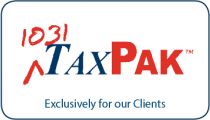You are here
1031 TaxPak › How to Report the Handling of Contract Notes (Seller Financing) in a 1031 Exchange › How to Report the Handling of Contract Notes (Seller Financing) in a 1031 ExchangeHow to Report the Handling of Contract Notes (Seller Financing) in a 1031 Exchange
Error message
Deprecated function: The each() function is deprecated. This message will be suppressed on further calls in _taxonomy_menu_trails_menu_breadcrumb_alter() (line 436 of /home/expert1031/public_html/sites/all/modules/taxonomy_menu_trails/taxonomy_menu_trails.inc).There are a number of terms used for seller financing: "Contract for Deed," "Owner Carry Note," "Seller Contract," "Purchase Money Financing," etc. These all describe a situation where the buyer wants the seller to provide a portion of the financing. For example, Bob Buyer wants to buy your rental house for $200,000 and can provide $170,000 of cash if you will carry the balance of $30,000 for five years, at which time he will pay you off. The $30,000 portion is the seller financing we're talking about.
There are two ways to handle seller financing in a 1031 exchange, and each has a dramatically different tax impact. In the first example, the note comes to you and you pay tax on it. In the second example the note comes to us and passes through your exchange tax free. Let's discuss each alternative in detail.
Alternative #1
In the first alternative, Bob Buyer promises to pay you, the seller, the $30,000 note. This makes the $30,000 taxable to you. In most cases you will pay tax on the $30,000 as you collect the principal payments, but notice that you will have immediate recapture if you have taken depreciation. And a few unlucky taxpayers must pay the tax when they receive the note because they are accrual basis taxpayers.
Assuming you pay tax on the principal payments as you collect them, you would report them as installment sale proceeds and report them on Form 6252. Be aware that in situations like a 1031 exchange, the gain comes first, which means the entire amount of the principal proceeds you report each year are reported as taxable gain. In other words, you can’t offset any of the cost of the property against the gain.
We've attached a sample of a completed Form 6252 showing how you'd report a $30,000 note in the year of sale.
We've also attached a sample of Form 4797 illustrating the handling of depreciation recapture (assuming you've taken the $18,456 of depreciation we've used in our TaxPak examples). If you bought down, here is the Buy-Down example of 4797.
Alternative #2
In the second alternative, which covers most of the transactions we handle, the $30,000 note becomes part of the exchange. This means that at the time of the purchase, Bob Buyer agreed to pay the $30,000 note to the 1031 Exchange Experts' llc, and we add the note to the cash we were holding for you as part of your exchange. If this situation covers your transaction, you will have to buy, or arrange to purchase, the note from us before you can close on the purchase of your New Property.
In most situations the client purchases the note from us, although occasionally a relative or business associate is the purchaser. In this example, you would bring us a check for $30,000 which we would add to the exchange proceeds we are holding for you. You would then take ownership of the note, which we would assign to you. Since you bought the note, your "tax basis" in the note is $30,000, which means the principal payments you receive are a "return of basis" and not taxable to you. In this situation, you would NOT file Form 6252.
Regardless of which of the above alternatives applies to your situation, any interest you receive on the note is always taxable when you receive it.





It Doesn’t End at 15%
Multi-Ownership issues in 1031 exchanges?
1031 Exchanges Targeted for more audits by IRS and states